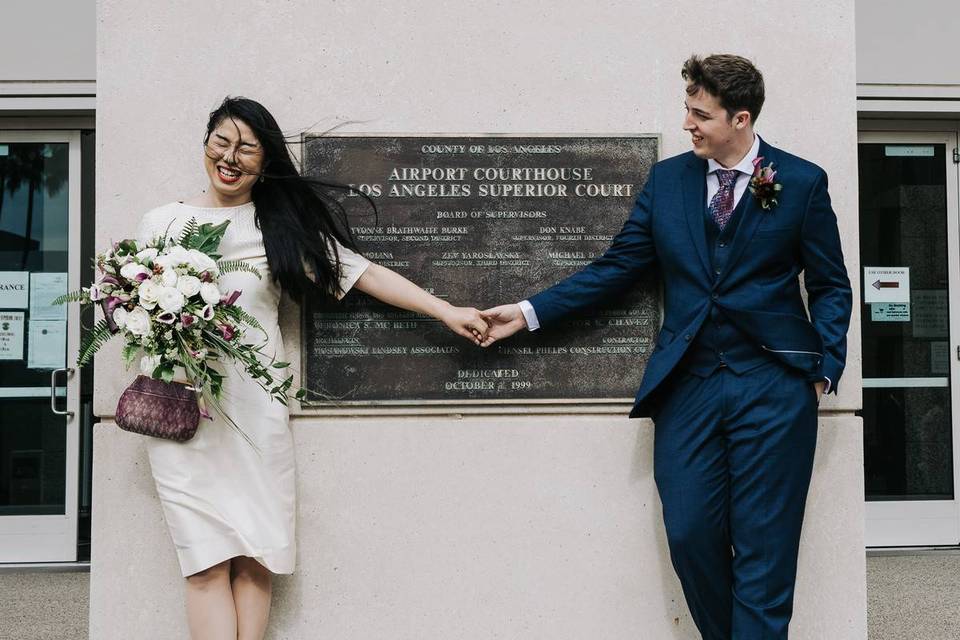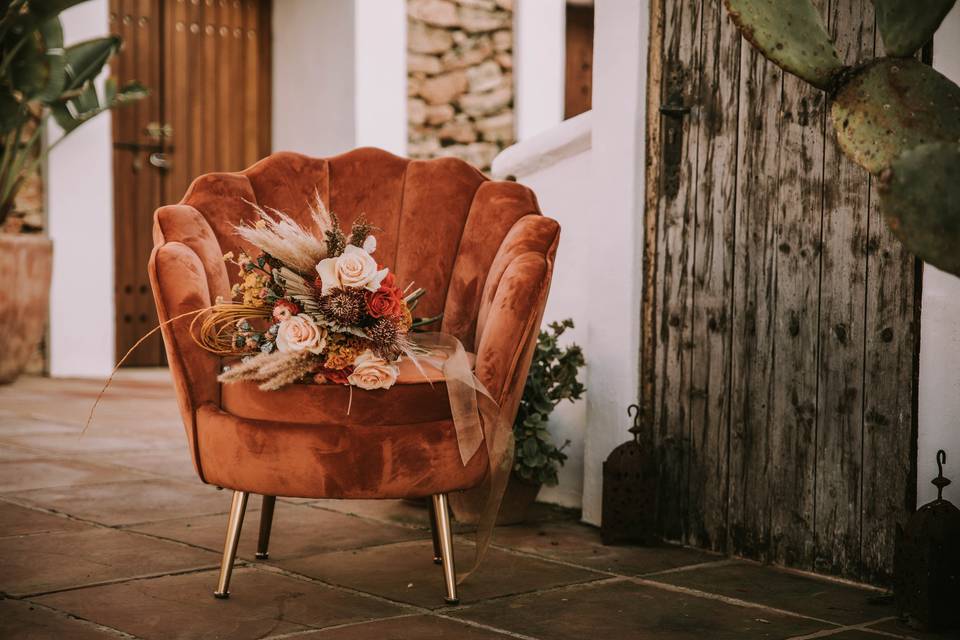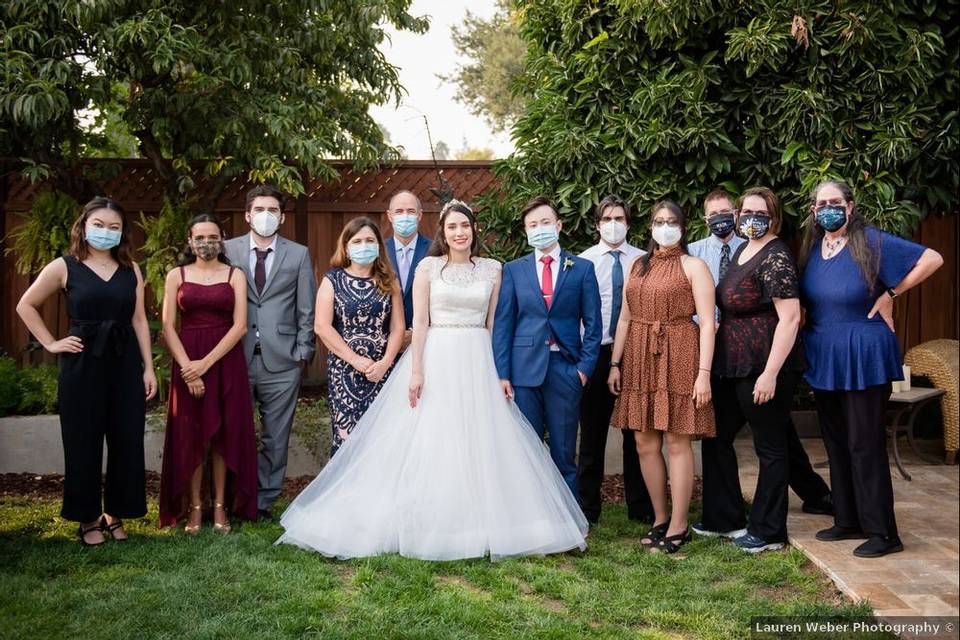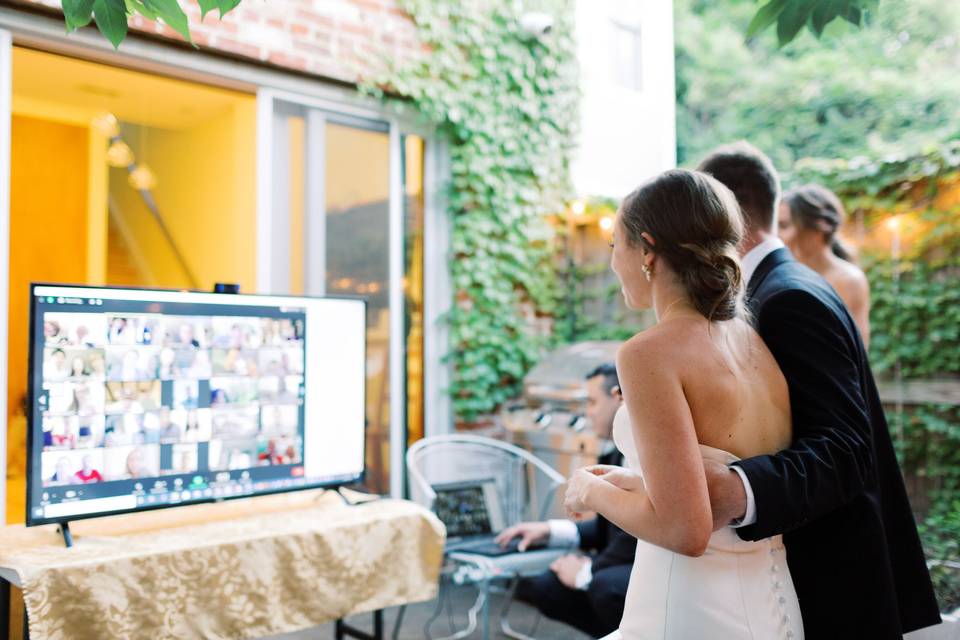What Will Weddings Be Like After COVID Restrictions are Lifted?
From smaller tables to unique entertainment, these are the ways weddings will change after COVID restrictions are lifted.
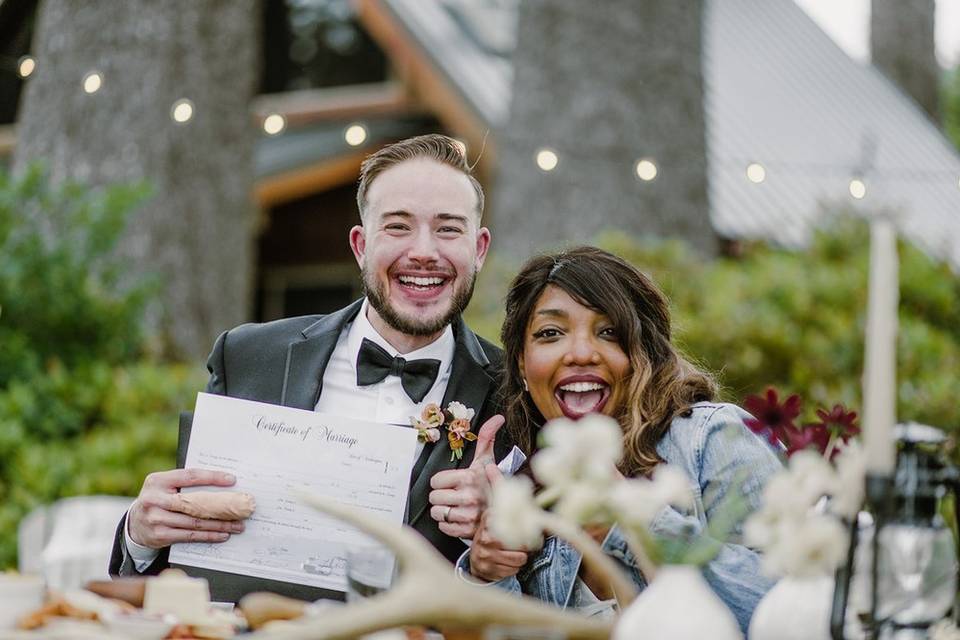
While there’s still much unknown about what life will be like over the next few months, we know that weddings after COVID gathering restrictions are lifted will look somewhat different. As many couples have postponed their nuptials, wedding professionals have already started to think about how to make events joyful, romantic—and yes, safer. We asked pros to give us their best sneak peeks at what weddings after COVID restrictions will look like. Of course, much of this depends on the CDC guidelines and state and local regulations, but we predict that many of these new (and creative!) ideas will be implemented in the coming months. If you’re planning a wedding to take place after COVID restrictions are lifted, read on for expert advice for hosting a memorable event.
Guest list
When people are once again able to gather, weddings will likely be smaller than before. “For couples that still want to have an enjoyable experience, managing the size of your guest count is going to be key,” says Leah Weinberg of Color Pop Events in Long Island City, New York. “I would encourage people to be proactive and curate a small gathering so guests can actually relax, have fun, and feel more confident about attending.”
While figuring out how to cut your guest list can be an overwhelmingly difficult task (but we promise your loved ones will understand!), in the end, there are benefits to having a smaller event. Says Lindsay Parrott of P3 Events in Chicago: “The events will be intimate by default now, allowing couples to perhaps spend more on details and the experience as a whole.”
Invitations and pre-wedding communication
Many couples have sent change-the-date cards to announce a wedding’s postponement, but there are additional pieces of stationery that weddings after COVID may need. “Before your event, send a coordinated note in your invitation explaining that you will be monitoring health and regulatory guidelines as we navigate through these unprecedented times,” says Emily Butler of Karson Butler Events, with offices in both Washington, DC and California.
“Leading up to the event, couples are sending official digital invitations to those who cannot make the live event to join the ceremony live on live stream,” says Mary Angelini of Key Moment Films in Palm Beach, Florida and Boston. "These custom digital invitations are detailed to match the couple’s formal invitation and give instructions on where and how to view the video. They are a great way to build excitement and community before the big day.”
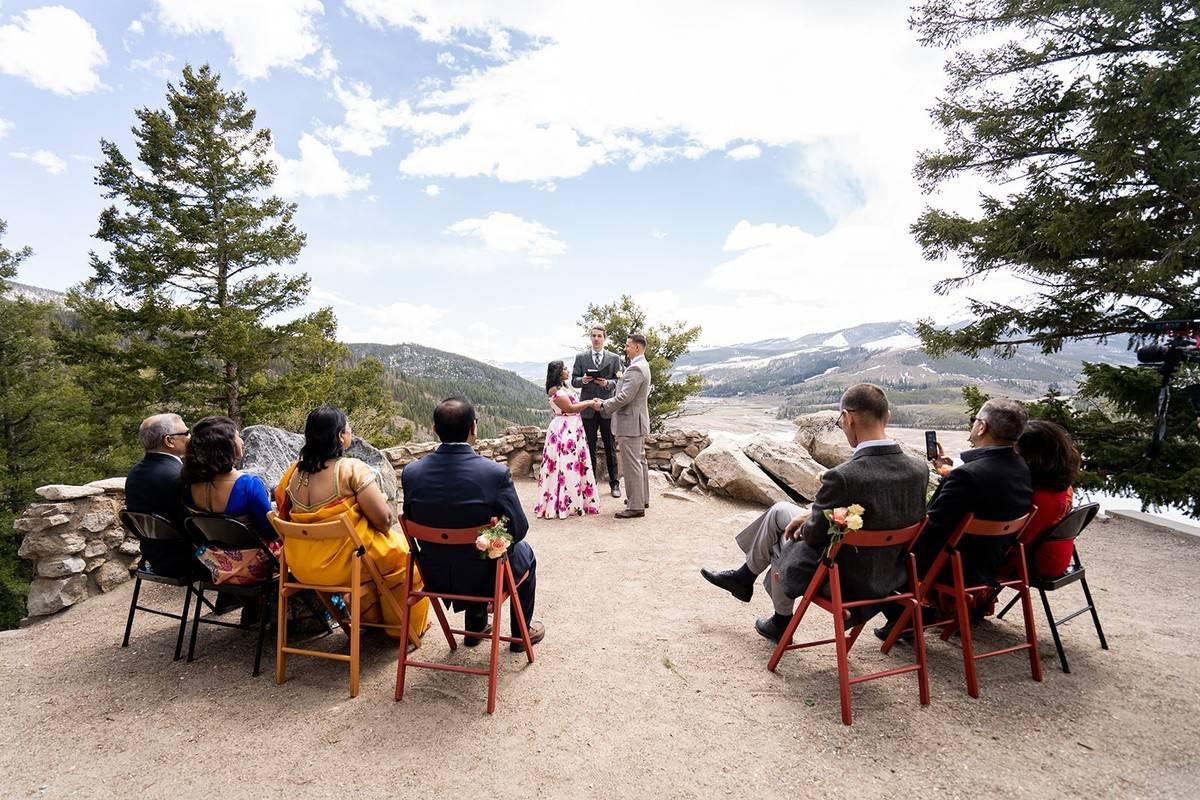
Ceremony
At weddings after the COVID gathering restrictions, the ceremony will still be an emotional and special experience, with a few tweaks to the layout to enhance the safety factor. “I expect that we might see standing ceremonies, with only a handful of chairs,” says Bethel Nathan of Ceremonies by Bethel in Bonsall, California. “By not having rows and rows of ceremony seats, you allow people the freedom to stand as close to or as far from others as they are comfortable.” Nathan also plans on suggesting that her couples stand a bit further away from her than usual, and the wedding party either stand in a more spaced-out fashion or sit or stand among the guests. Ceremonies may also become somewhat shorter (“maybe to an average of 15 minutes versus my current average of 20 minutes,” says Nathan) to ensure everyone’s comfort.
Ceremony programs are another detail to think about. “If your ceremony is indoors, you can place a ceremony program on each chair, rather than having someone hand them out,” says Janice Carnevale of Bellwether Events in Falls Church, Virginia. “Or forgo the program, and put that information on a large chalkboard with beautiful calligraphy.”
Guest seating
When it comes to guest seating at weddings after COVID restrictions are lifted, expect to see smaller tables, spaced more of a distance—think more restaurant-style seating, as opposed to large tables with lots of guests. “Table assignments will be based on households, not friendships,” says Kristy Rice of Momental Designs in Wyoming, Pennsylvania. “Imagine a mix of table sizes to suit families from two to 10 people.”
And according to Carnevale, “I think we can move away from escort cards, and use a seating chart instead.”
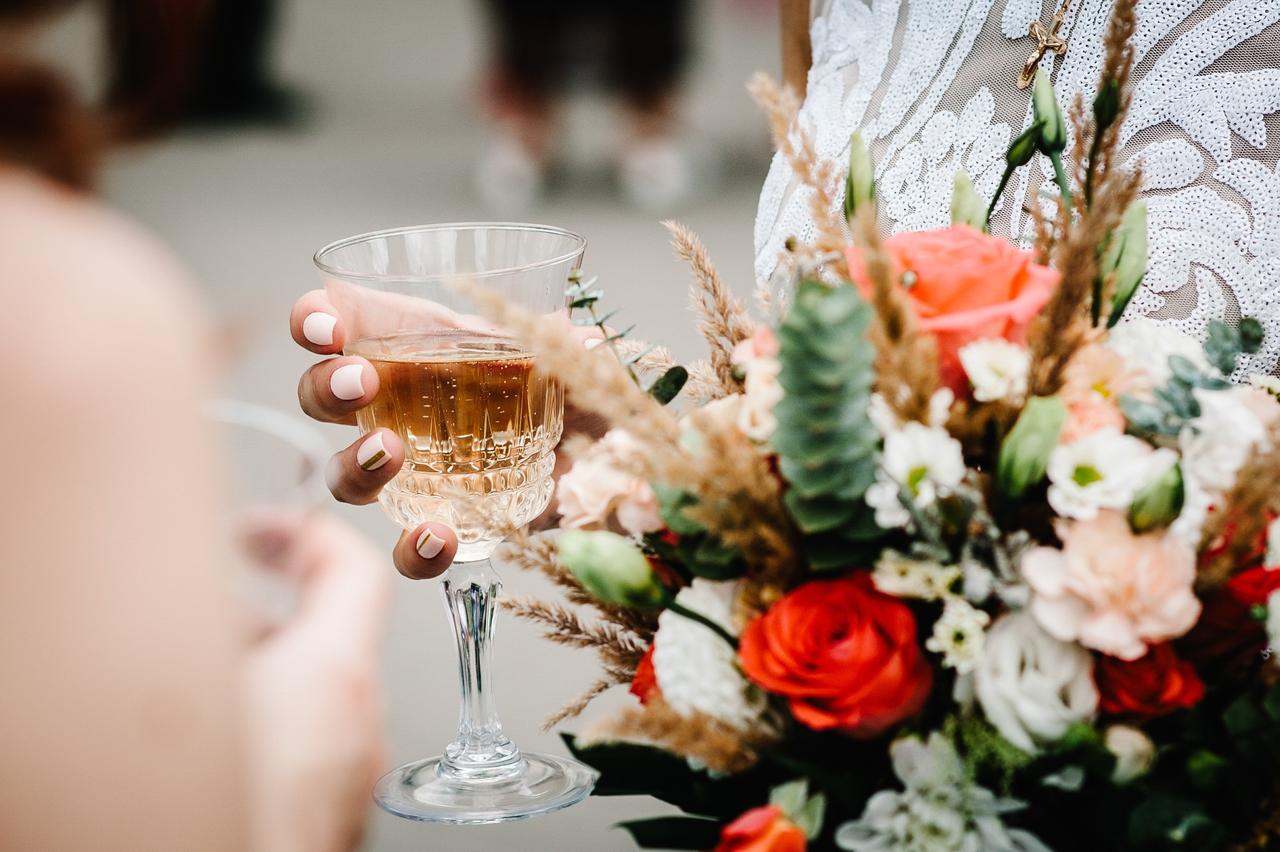
Food and drink
From cocktail hour to the reception, food and drink is a major part of any wedding reception. That won’t change, but the way meals and beverages are presented likely will. The goal here is to ensure as few hands as possible involved in plating and setup, while still providing guests with a delicious culinary experience, says Lindsay Parrott.
During cocktail hour, an increase in the number of bars and bartenders will alleviate the number of guests standing in line, Carnevale says, and passed hors d’oeuvres may be skipped in favor of beautiful mini boxes of appetizers that are passed out to guests.
“Bars will likely require sneeze guards (hello, cafeteria flashbacks!) so I imagine we'll see some really fun custom bars with these modifications built in,” says Emily Butler.
For the reception meal, the focus will be on serving each guest individually to avoid touching communal surfaces. “Expect plated meals to make a big comeback, in lieu of buffets and family-style meals,” says Heather Jones of Wente Vineyards in Livermore, California.
While buffets may be possible, they’ll probably be a bit different—small food stations, rather than long lines of dishes. “Each buffet station would most likely be operated by a chef or server, keeping safety in mind, with gloves, and face masks on during serving,” says Sarah Kuhlberg of Colette’s Catering & Events in Fullerton, California.
The same goes for desserts—cakes will be sliced and served to each guest, rather than guests taking a plate from a communal table. "Elaborate self-serve dessert tables of cookies, cupcakes, and candy will be replaced with individually wrapped and packaged items or dessert sampler plates prepared by the catered and served one-by-one to seated guests,” says Jennifer Feldstein of The Last Minute Bride in Vacaville, California.
Music
Instead of packed dance floors, couples may be moving toward a fancy dinner party atmosphere focusing on toasts and speeches, special dances, and unique entertainment. “This would mean the music is more important than ever with a curated set list of music used from the introductions, to the special dances, to all of your favorite songs while you enjoy dinner,” says Kristin Wilson of Our DJ Rocks in Apopka, Florida.
There will also be creative opportunities to experience music throughout the reception. Says Wilson: “We can set up different themed music areas throughout the venue that your DJ controls, or we package in a saxophonist in one space, a drummer outside, and the DJ inside.”
Larger dance floors and more slow dances will also make distancing possible, as will some fun entertainment options. “We will also want to allocate more room on the dance floor, and perhaps utilize new technology like Silent Disco to keep the party going, but from a safe distance,” says Kimberly Morrill of Your Perfect Bridesmaid in Portland, Oregon.

Flowers and decor
Smaller weddings mean couples can be even more creative with their decor. Signage will be even more important, from menus to seating charts, even signs featuring fun song lyrics near bathroom sinks to encourage 20-second hand-washing, says Butler.
In terms of flowers, flexibility is key. “Couples will want to think in terms of color palettes and textures when it comes to their vision, because their favorite blooms may be more difficult to procure,” says Oleta Collins of Flourishing Art Design Studio in Bakersfield, California. “Going local and with what’s in-season will be big.”
And lighting may play a bigger role than ever before. “Couples are expecting smaller guest counts so they’re coming to us and asking us how we can help make the room feel full,” says Kevin Dennis of Fantasy Sound Events in Livermore, California. “We’ve been adding spotlights on the tables, spreading out chandeliers and increasing the number of accent walls to help make the space feel whole and encompassing.”
Favors and giveaways
Hand sanitizer is a hot commodity these days, and it’s going to be a popular wedding favor in the months to come. Guest care stations complete with hand sanitizer and wipes will be more commonplace, particularly near restrooms and any doors that guests will walk through, says Butler.
A big question for weddings after COVID restrictions revolves around masks—should couples provide masks for their guests? “I don’t think we need to go overboard with customized masks for guests,” says Carnevale. “But having some there as a backup plan is important—and they don't have to be customized.” Should you wish to provide masks for your guests, you can purchase a variety of styles on sites like WeddingWire Shop.
Welcome bags will also be reimagined. “Instead, maybe something is mailed to each guest in advance to get them excited for the weekend to come and to communicate any last-minute details,” says Butler.
Photo and video
Photography and videography will play an even larger role in weddings that take place after COVID restrictions are lifted. Loved ones who are not able to attend will be able to experience the event through live streaming, photos, and videos. “Professional videography is bringing more value to couples and their families because they can share the emotions from the event with their missing family members,” says Mary Angelini. “In addition to more couples wanting videography, we are also seeing an increased request for live streaming services for wedding ceremonies and receptions. Including family members by live streaming the event is a special way to include those who were unable to make the event in person.”
In terms of photography, longer lenses and shooting outdoors make photographing from a distance totally possible. “I plan to have open conversations, multiple times if needed, around comfort levels with the photography experience,” says Julia Wade of Julia Wade Photography in Apex, North Carolina. “By nature, photography is a more hands-on and intimate vendor experience. So, we'll be asking questions about handling bouquets, adjusting a groom's tie during portraits, and everything in between.”


